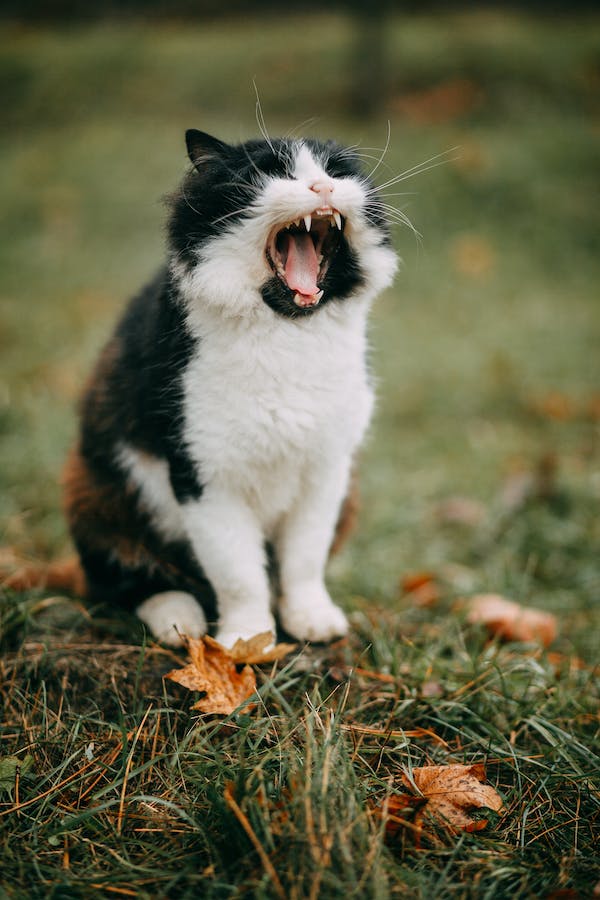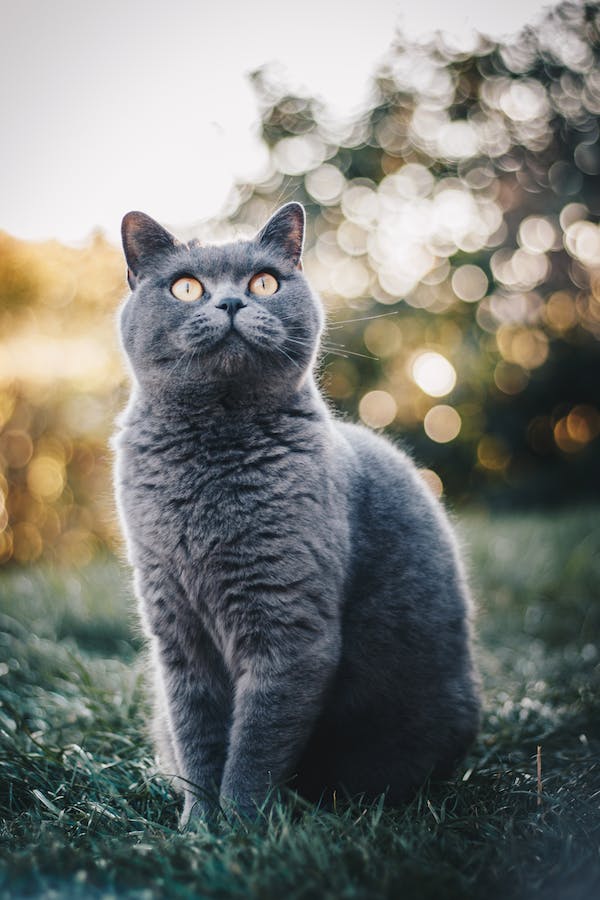
Hey there, fellow feline enthusiasts!
If you’ve ever witnessed your usually sweet and cuddly kitty turn into a whirlwind of claws and teeth seemingly out of nowhere, you’re not alone.
We’re here to talk about the intriguing world of overstimulated cat behavior.
So, grab a cup of coffee, or perhaps a cozy blanket and your purring companion, and let’s dive in!
What is Overstimulation in Cats?
Overstimulation in cats occurs when our furry friends become excessively excited or agitated.
This can happen during playtime, petting, due to sudden noises, interactions with other cats, or territorial issues.
When a cat is overstimulated, they may exhibit signs like excessive meowing, pouncing, restlessness, tail swishing, and dilated pupils.
To handle this, it’s essential to stay calm, avoid sudden movements, and redirect their attention to toys or give them space as needed.
Understanding your cat’s limits and signals is key to maintaining a peaceful environment for both you and your feline companion.
Why Cats May Become Overstimulated

Ever wondered why Fluffy suddenly goes from purring peacefully in your lap to acting like a ninja on a sugar rush?
There are several reasons for this behavior:
Sensory overload
Cats are sensory creatures, and they have incredibly sharp senses, particularly hearing and vision.
Sometimes, their heightened sensitivity can work against them.
Too much noise, excessively bright light, or even intense physical touch can overwhelm their senses.
This sensory overload can lead to discomfort and stress, ultimately pushing them over the edge into an agitated state.
Social overload
Cats are known for their independent nature, but that doesn’t mean they don’t enjoy social interaction.
However, just like humans, they can experience social overload.
When they’re bombarded with too much attention or interaction too quickly, it can become overwhelming.
It’s important to respect their need for personal space and allow them to engage socially at their own pace.
Play overload
Playtime is crucial for a cat’s physical and mental well-being.
It’s a way for them to exercise their hunting instincts and burn off excess energy.
However, there’s a fine line between healthy play and play overload.
When play becomes too intense or goes on for an extended period, your furry friend can become overstimulated.
This may lead to aggressive play behavior or even aggression towards you or your playmates.
Territorial issues
Cats are inherently territorial animals, and they take their territories seriously.
When they perceive a threat to their turf, their stress levels can shoot up.
This heightened state of alertness and agitation can potentially lead to aggressive behavior as they defend what’s rightfully theirs.
Sudden noises or movements
Cats are naturally vigilant and alert.
Their keen senses are always on the lookout for potential prey or threats.
Therefore, when they encounter sudden loud noises or unexpected movements, their fight-or-flight response can be triggered.
This heightened state of alertness, although a survival instinct, can escalate into overstimulation, leading to a state of restlessness and potentially aggressive behavior.

Signs of Overstimulated Behavior
So, how do you know if your cat is on the verge of overstimulation? Look out for these telltale signs:
- Tail twitching: When you see your cat’s tail start twitching or lashing, it’s like a warning signal. It’s often an early sign that they’re reaching their limit of excitement or tolerance.
- Ears flat back: If your cat’s ears flatten against their head, it’s a clear sign that they may not be in the mood for more petting or play. Flat ears indicate discomfort or irritation.
- Dilated pupils: Enlarged pupils can indicate heightened agitation or excitement. While big, round pupils are often a sign of curiosity, in the context of overstimulation, they can signify that your cat is becoming overwhelmed.
- Hissing or growling: When a cat hisses or growls, it’s a clear sign of distress or irritation. These sounds often precede or accompany aggressive behavior.
- Excessive vocalization: If your cat starts meowing loudly and persistently, it’s a sign that they’re trying to communicate their discomfort or agitation.
- Restlessness: Restlessness and an inability to sit still are also signs of overstimulation. Your cat may appear jittery, pacing around, or repeatedly changing positions.
- Pouncing and biting: When your cat pounces on your hand or any moving object and even gives a playful (but sometimes painful) bite, it’s often part of play behavior.
Managing Overstimulated Cat Behavior
Now, let’s get to the good part – how to manage overstimulated cat behavior and keep the peace in your home.
Recognize the signs
To begin with, it’s essential to become familiar with your cat’s body language.
Pay attention to their cues and respect their boundaries.
When you notice their tail twitching, ears flattened, dilated pupils, hissing, growling, excessive vocalization, restlessness, or intense play behavior like pouncing and biting, it’s time to take action.
These signs are their way of saying, “I’ve had enough.”
Time-outs
When you see those warning signs, give your cat some space and time to calm down.
This might mean physically moving away from them or gently ending the play or petting session.
By doing so, you prevent the situation from escalating into overstimulation and potentially aggressive behavior.
Sometimes, just a few minutes of alone time can help your cat regain their composure.
Interactive toys
To help manage your cat’s energy and redirect their focus, interactive toys can be incredibly valuable.
Toys like feather wands or laser pointers are excellent choices.
They engage your cat’s hunting instincts and provide a safe outlet for their excess energy.
It’s a win-win – your cat gets the exercise and mental stimulation they need, and you can avoid overstimulation during direct interactions.
Establish a routine
Cats thrive on routine and predictability. Establishing a regular schedule for playtime and quiet time can work wonders.
Cats like to know what to expect.
When they anticipate a daily play session at a particular time, it can help reduce anxiety and the potential for overstimulation.
It also provides structure and stability in their daily lives.
How to Prevent Overstimulation

Preventing overstimulation is the key to a happy and harmonious relationship with your kitty.
Moderation
When it comes to petting and play, remember that a little goes a long way.
Overdoing it with petting or play can push your cat over the edge into overstimulation.
Pay attention to their cues and be mindful of the duration of interactions.
Short and sweet sessions are often more enjoyable for your cat and less likely to lead to overstimulation.
Safe spaces
Creating safe spaces in your home is essential.
Cats need a refuge where they can retreat when they’ve had enough social interaction or play.
Cat trees, cozy hideaways, or even a quiet room can serve as these safe spaces.
Make sure these areas are easily accessible to your cat so they can withdraw when they need a break.
Regular exercise
Cats are natural hunters and need physical and mental stimulation to stay happy and healthy.
Regular exercise is crucial for them to burn off excess energy.
Playtime is an excellent way to achieve this.
Interactive toys, like feather wands or laser pointers, can mimic hunting and provide the exercise your cat needs.
Calm environment
Cats thrive in calm and predictable environments.
Sudden loud noises or disruptions can trigger their stress response, potentially leading to overstimulation.
Try to minimize such disturbances.
If your home is prone to noisy moments, provide a quiet space where your cat can escape the chaos.
Conclusion
In the end, it all comes down to understanding and respecting your cat’s unique needs and boundaries.
Just like we humans sometimes need our personal space, so do our furry friends.
By recognizing the signs of overstimulation and making a few simple adjustments, you can keep the peace and enjoy a happy, contented cat.
FAQs
Overstimulation itself is not usually harmful, but it can lead to aggressive behavior or stress if not managed properly.
Yes, with patience and gentle training, it’s possible to desensitize a cat to certain stimuli or situations that trigger overstimulation.
Your cat will often let you know through body language. Look for relaxed body posture, purring, and a willingness to engage.


GIPHY App Key not set. Please check settings